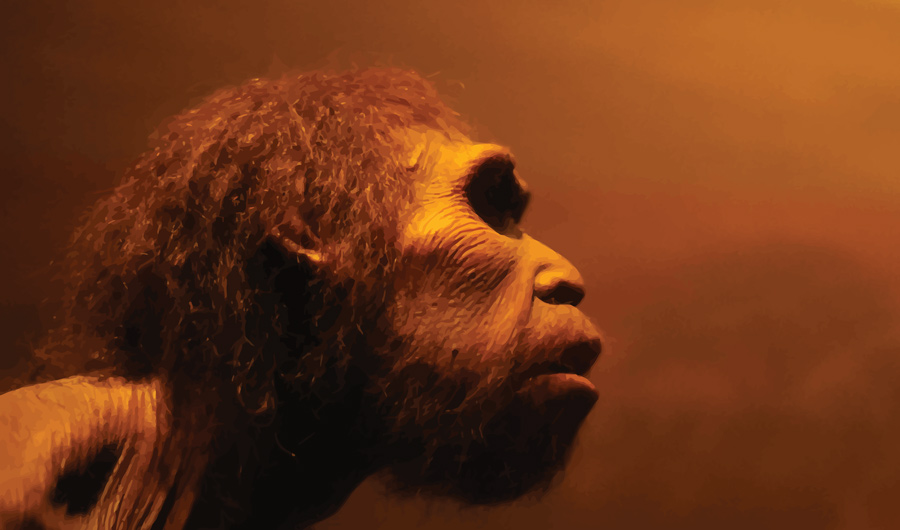Neanderthal DNA Unearthed from Dirt

(Inside Science) -- Roughly 100,000 years ago, a community of Neanderthals settled into a region of what we know as northern Spain, calling it home for many generations. The expansive limestone caves served as shelter from the elements, a workshop for making stone tools, and a kitchen for butchering animals.
Despite the rich history and activity at this site, known as Galería de las Estatuas, only a single Neanderthal fossil has ever been recovered: a pinky toe bone, too tiny to extract genetic material from without destroying it completely. Finding Neanderthal skeletal remains in general is very rare -- so much so, that out of hundreds or even thousands of archeological sites, ancient DNA has been salvaged from a mere 18 individuals.
"Neanderthals lived for hundreds of thousands of years, spanning Europe and Asia, and we're representing them with 18 people," said Benjamin Vernot, a postdoctoral scientist at the Max Planck Institute for Evolutionary Anthropology. "We sort of have hit a limit. Every once in a while, someone digs up a new Neanderthal bone, but a lot of the results that have come out so far are things that have been excavated in the '70s, '80s, or '90s."
More stories about archaic humans from Inside Science
Genetic Traces of Mysterious Human Lineage Detected in People Living in West Africa
Humans and Neanderthals May Have Shared Jewelry Designs
Extinct Human Lineage Settled the Tibetan Plateau Long Before Modern Humans
In a new study, Vernot and his colleagues showcase a resourceful technique to gather more ancient human DNA from, essentially, dirt. Every handful of sediment from the floor of Galería de las Estatuas and other caves contains a wealth of DNA from the plants, animals and microbes that once resided there. The researchers discovered an innovative way to sift through the mass of jumbled-up genetic material to extract Neanderthal DNA.
"You can imagine a Neanderthal woman sitting in the cave, butchering a deer, and she cuts herself. She bleeds on the floor a little bit, and that blood has DNA in it, which binds to the dirt in the floor," said Vernot. "Time passes, more dirt accumulates, and her DNA is trapped in the dirt. We can now go find it and learn about that person."
Previous work has successfully retrieved Neanderthal and Denisovan mitochondrial DNA -- a small circular chromosome found inside cells' energy-generating organelles -- from sediment. Each cell has about 10 to 100 copies of the mitochondrial genome and only two copies of the nuclear genome, making the former much easier to find. But because mitochondrial DNA is solely maternally inherited, it fails to capture the complete genetic history of archaic humans.
The current study marks the first time that sediment-based nuclear DNA of archaic humans has been unearthed and analyzed. The recovery technique, which targets regions in the genome that differentiate humans from other mammals, opens the doors for many more molecular studies that could fill in missing pieces of the human origins story. The results were published by the journal Science this week.
"Obtaining DNA from cave sediments is a remarkable achievement and offers a tremendous way to unravel the later developments in human evolution," said Richard Potts, director of the Human Origins Program at the Smithsonian's National Museum of Natural History, who was not involved in the research. "The study is a boon to figuring out what we now know, based on ancient DNA analyses, was a very complex history of how Neanderthals, Denisovans and Homo sapiens interacted and interbred."
For Vernot and his colleagues, searching for small bits of Neanderthal nuclear DNA in samples of dirt was like spotting a needle in an elephant-sized haystack. Even though they chose sediment from known Neanderthal sites -- Galería de las Estatuas, along with Denisova Cave and Chagyrskaya Cave in Siberia -- more than 99.9% of the genetic material came from microbes, plants and other nonmammalian sources. Then, out of all the mammalian DNA, less than 1% originated from archaic humans.
"No one has ever found human DNA in sediments by shotgun sequencing, which is just sequencing everything in the sample," said Vernot. "So we went looking for particular regions in the human genome and designed what are called probes that essentially allow you to fish out DNA from the sample."
The researchers figured out which portions of the genome possess a large amount of mutations in different mammals and are especially unique to humans. They also took into account which portions would be informative regarding population relationships, such as DNA that differs between modern humans and Neanderthals or between two individual Neanderthals.
After using the probes to fish out what could be human DNA from the Siberia samples, Vernot and his colleagues checked their findings against previously published ancient DNA extracted from skeletal remains in Denisova Cave and Chagyrskaya Cave. Their sediment-based results were consistent with the bone-based data and likely came from the same population of Neanderthals.
The researchers then applied the same technique to sediment samples spanning 40,000 years from Galería de las Estatuas, a site where much less is known about the Neanderthals who lived there due to the lack of recoverable nuclear DNA. They obtained older sediment-based nuclear DNA that pointed to a consistent population who occupied the site until about 100,000 years ago, when a distinct turnover seemed to occur. At that point, a different population took over, according to their data -- an event possibly connected to the rapid cooling of the Earth at the beginning of a new ice age.
"The fact that molecular genomes can be recovered from cave sediments, rather than by destroying parts of fossil bones and teeth, means that molecular studies can really ramp up," said Potts. "We can thus determine from sediments who exactly occupied particular caves in Europe and Asia and at what times."
Potts also believes these types of sediment studies can further clarify one of the most intriguing findings about human origins to emerge over the past dozen years: the interbreeding among species, including our own, as part of the evolutionary process.
However, he notes that finding sediment-based genetic material in warmer places, such as Africa, has not been possible due to the rapid degrading of DNA in such environments. He wonders whether caves could provide a controlled temperature setting for DNA preservation. If so, scientists may be able to step further back into the genomic history of human evolution and reveal even more compelling secrets of our distant past.

